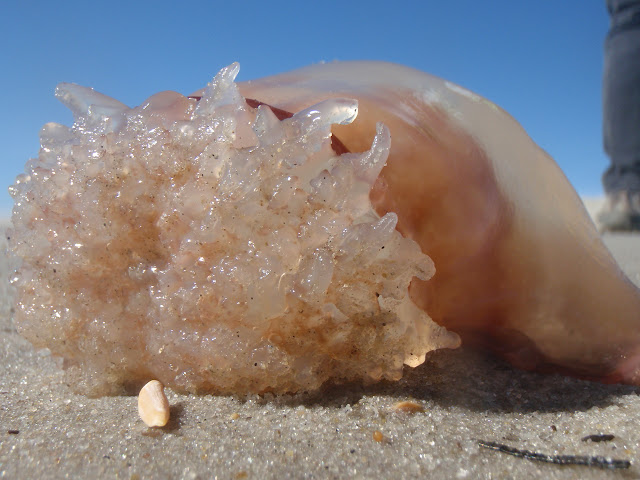"The universe is made of stories, not of atoms."
Muriel Rukeyser
This is a lovely quote, and a lovely way of looking at the world, written by a brilliant poet who grew up in a world that saw the horrible consequences of reducing the world to a machine, in a world that slaughtered millions of those who shared her faith, because of their faith.
The atom has been indelibly tied to the misnamed "atom bomb" and incredible abuses of the 20th century.
I just wish she had said "machines" instead of atoms.
Atoms, in the context of science,
are stories. It's taking me weeks to convince my students that the image of atom that exists in their heads, an image perpetuated by many teachers, by television (is it called that anymore?), by textbooks,
does not exist.
***
If there is ever a place to teach the nature of science to children, it's in the idea of atom--
a (not)
tomos- (divisible)--an indivisible particle.
Democritus' early view (poo-poo'ed by Aristotle) that matter can only be divided so far before it is no longer what it is is easy enough to conceptualize. Introduce the idea in 4th grade. Here's a piece of gold. Split it in half. Split it in half again. And again.
No way to see what the smallest particle looks like, but it's easy to imagine that there may be a limit to how small gold may be divided.
No need to bother with electrons or neutrons or protons or orbits in elementary school. A child who parrots these words is no smarter than, well, a parrot.
Come 7th grade or so, after a child has played with magnets and static electricity, and has some sense of what charge means (in the observable world, not the surreal field of fields), when a child gets that opposite charges attract, then show her the Thomson experiment with the cathode ray tube.
Not a Powerpoint, not a video--show the real thing. Deflect the stream of particles with a magnet. Here's a great video showing what we should be doing in class:
Let the kids imagine what an atom looks like now--we know it has tiny particles called electrons, we know the charges of the electrons are negative, and we know the overall charge of the atom is neutral. Let the children draw
their own models that fit these criteria. See what they develop.
By high school, maybe sooner, they're ready for Rutherford's experiment--he fired alpha particles at gold foil, and most passed through without deflection. About 1 in 20,000 (give or take) wildly changed direction, as though it hit a chunk of incredibly dense mass.
The atom, whatever this thing is, behaves as though it's mostly empty space, at least when hit with alpha particles.
And that only gets us to 1911. Toss in Bohr to get us to 1913, a ridiculously counter-intuitive model of reality, leading two physicists to vow "If this nonsense of Bohr should in the end prove to be right, we will quit physics!"
And yet my students scribble down this counter-intuitive "nonsense" without complaint. Why? Because we present it as facts, as some Universal Knowledge, as something they must regurgitate. Many of them believe humans have seen individual atoms just like the pseudo-Bohr models printed in textbooks.
And here's the secret that even scientists occasionally forget--our worldview, science or otherwise, rises from stories. The concept of atom is pure story, though not pure fiction--there are deep truths in the model of the atom, as there are deep truths in great poems and novels.
Literacy cuts across all disciplines--we diminish science when we fail to see the stories.
The atom is no more real, or less, than the stories that define us. We reify the abstract every waking moment, and it's how we live and work and play as we get through a day.
But it's still all stories....






























